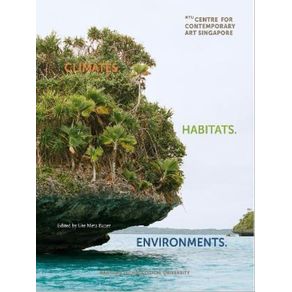Artists and writers go beyond disciplinary boundaries and linear histories to address the fight for environmental justice, uniting the Asia-Pacific vantage point with international discourse.
Modeling the curatorial as a method for uniting cultural production and science, Climates. Habitats. Environments. weaves together image and text to address the global climate crisis. Through exhibitions, artworks, and essays, artists and writers transcend disciplinary boundaries and linear histories to bring their knowledge and experience to bear on the fight for environmental justice. In doing so, they draw on the rich cultural heritage of the Asia-Pacific, in conversation with international discourse, to demonstrate transdisciplinary solution-seeking.
Experimental in form as well as in method, Climates. Habitats. Environments. features an inventive book design by mono.studio that puts word and image on equal footing, offering a multiplicity of media, interpretations, and manifestations of interdisciplinary research. For example, botanist Matthew Hall draws on Ovid's Metamorphoses to discuss human-plant interpenetration; curator and writer Venus Lau considers how spectrality consumes--and is consumed--in animation and film, literature, music, and cuisine; and critical theorist and filmmaker Elizabeth Povinelli proposes "Water Sense" as a geontological approach to "the question of our connected and differentiated existence," informed by the "ancestral catastrophe of colonialism." Artists excavate the natural and cultural DNA of indigo, lacquer, rattan, and mulberry; works at the intersection of art, design, and architecture explore "The Posthuman City"; an ongoing research project investigates the ecological urgencies of Pacific archipelagos. The works of art, the projects, and the majority of the texts featured in the book were commissioned by NTU Centre for Contemporary Art Singapore.

